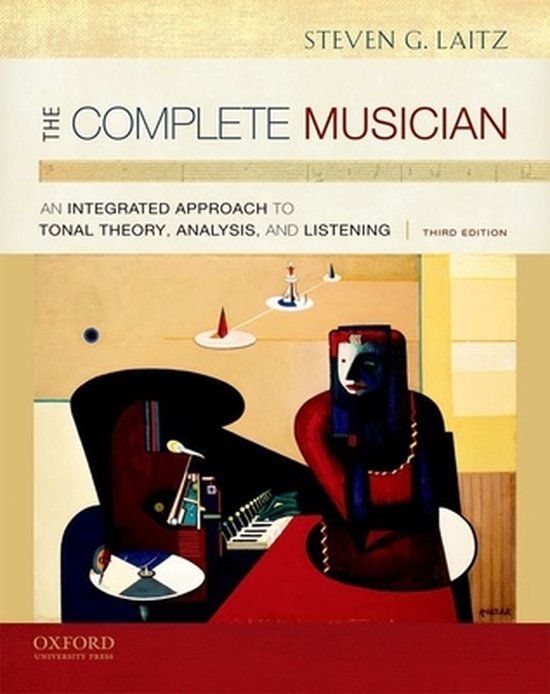
The Complete Musician
Beginning with music fundamentals, this text covers all the topics necessary for a thorough understanding of undergraduate music theory by focusing on music in context. The text links each of the tasks that comprise a tonal theory curriculum, explicitly connecting written theory (writing and analysis), skills (singing, playing, and dictation), and music-making outside the theory class. DISTINCTIVE FEATURES * Presents an outstanding quality, quantity, and diversity of exercises geared toward real music and real music situations * Explores not only standard four-voice harmony, but also other musical domains including melody, counterpoint, and a multitude of textures; the result is a text with applicability and relevance to all musicians * Includes almost 4,500 musical examples from the common-practice repertoire in the text and workbooks, more than 90 percent of which are on the CDs included with the text and workbooks-nearly twenty hours of music on MP3 files (all music is performed, recorded, and engineered at Eastman) NEW TO THIS EDITION * Revised with beginning students in mind, this edition contains more basic exercises as well as solutions to selected exercises in the text. Longer and more difficult exercises have been moved to the workbooks. * Streamlined and reorganized with fewer chapters (31, down from 37), the text presents the most commonly taught topics in sequence and moves less-common topics-such as invertible counterpoint, compound melody, and motive (covered in chapters 15, 16, and 23 of the previous edition)-to the appendices, where instructors may access them as their individual curriculum permits, or omit them altogether. * This edition offers a new presentation of fundamentals: the first three chapters provide a review and synthesis for students with experience in music fundamentals, and a 75-page appendix introduces key concepts for students with little or no experience. This allows instructors to choose the pacing that best suits their class and individual students. * Numerous musical examples include guiding annotations, with textural and structural reductions of more complex examples. * This edition presents more than 250 new literature excerpts and complete works for analysis and dictation, including new instrumental combinations. * New appendices offer further support: Appendix 5 covers terms and abbreviations used in the text and Appendix 6 includes selected answers to exercises in the text. SUPPORT PACKAGE * The new Companion Website (www.oup.com/us/laitz) provides instructor and student resources that include supplementary drill exercises. * The Instructor's Manual provides solutions to all of the dictation exercises, sample solutions for more than 250 writing (e.g., figured bass and melody harmonization) and analytical exercises, supplementary examples, exercises, and teaching guidelines that detail effective strategies for each chapter. * The two workbooks have been significantly reorganized: Workbook 1 is now dedicated to written and analytical activities, including figured bass, melody harmonization, model composition, and analysis. Workbook 2 covers musicianship skills. Exercises within each chapter of Workbook 2 are organized by activity type: singing arpeggiations of the chord being studied, then within a tune from the literature; two-part singing; dictation; keyboard; then instrumental application.
| Auteur | | Steven G. Laitz |
| Taal | | Engels |
| Type | | Hardcover |
| Categorie | | Kunst & Fotografie |



